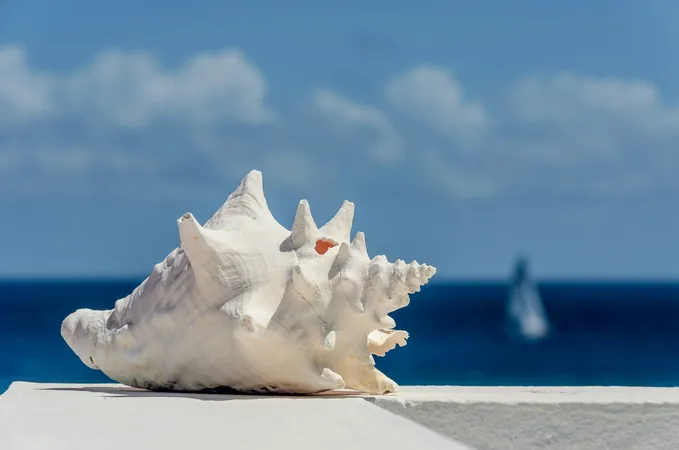
Unlocking Ancient Secrets: Can Blowing a Conch Shell Cure Snoring?
2025-08-10
Author: William
Could the age-old practice of blowing through a conch shell hold the key to combating obstructive sleep apnea (OSA)? A fascinating new study published in ERJ Open Research reveals that those who regularly practiced this ancient art for just six months saw significant improvements in their sleep-related symptoms.
What is Obstructive Sleep Apnea?
Obstructive sleep apnea is a widespread sleep disorder characterized by frequent interruptions in breathing during the night, primarily due to blocked airways. Symptoms include loud snoring, restless nights, and alarming daytime drowsiness. Besides being disruptive, OSA is associated with serious health risks such as high blood pressure, heart disease, and stroke.
The Conch Connection
For centuries, the act of blowing a conch shell, or shankh blowing, has been entwined with Indian culture. This new research spots its potential as a remedy for moderate OSA. Participants in the study reported better sleep quality, increased alertness during the day, and fewer nighttime breathing issues.
Led by Dr. Krishna K Sharma from the Eternal Heart Care Centre in Jaipur, India, the study aimed to explore this traditional yogic breathing exercise as a viable therapy for OSA patients who often find conventional treatments like CPAP machines uncomfortable.
The Study Breakdown
The study included 30 participants aged 19 to 65 with moderate OSA, monitored from May 2022 to January 2024. They underwent polysomnography for sleep evaluation and reported their sleep quality.
Half of the group was trained to blow through a conch shell while the other half performed deep breathing exercises. They were equipped with a traditional conch shell and practiced at home for at least 15 minutes a day, five days a week. After six months, results were astonishing.
Impressive Results!
Those who engaged in shankh blowing reported a 34% reduction in daytime sleepiness, better sleep quality, and reduced apneas by four to five per hour on average. They also exhibited improved blood oxygen levels during sleep.
The Science Behind the Shell
Dr. Sharma explained that the unique technique of blowing the conch requires deep inhalation followed by a forceful exhalation, creating vibrations that strengthen airway muscles. This method could potentially prevent the throat from collapsing during sleep in OSA patients.
A Promising Future
While this initial study is small, plans for a larger trial across multiple hospitals are already in the works, aiming to validate findings and understand shankh blowing's effects on airway dynamics and sleep over extended periods.
Expert Insights
Professor Sophia Schiza, a leading authority on sleep-disordered breathing, highlighted the need for alternative treatments for OSA. She remarked that while CPAP and conventional therapies are paramount, innovative solutions like shankh blowing could serve as beneficial adjuncts for selected patients.
With this intriguing study, the ancient practice of conch blowing might just echo through modern-day remedies, offering a new hope for those battling obstructive sleep apnea.









 Brasil (PT)
Brasil (PT)
 Canada (EN)
Canada (EN)
 Chile (ES)
Chile (ES)
 Česko (CS)
Česko (CS)
 대한민국 (KO)
대한민국 (KO)
 España (ES)
España (ES)
 France (FR)
France (FR)
 Hong Kong (EN)
Hong Kong (EN)
 Italia (IT)
Italia (IT)
 日本 (JA)
日本 (JA)
 Magyarország (HU)
Magyarország (HU)
 Norge (NO)
Norge (NO)
 Polska (PL)
Polska (PL)
 Schweiz (DE)
Schweiz (DE)
 Singapore (EN)
Singapore (EN)
 Sverige (SV)
Sverige (SV)
 Suomi (FI)
Suomi (FI)
 Türkiye (TR)
Türkiye (TR)
 الإمارات العربية المتحدة (AR)
الإمارات العربية المتحدة (AR)